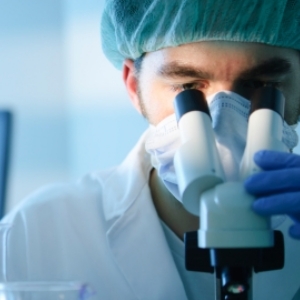
Both life spans and mortalities vary from species to species. The fact that the probability of dying rises with age applies to humans, but is not principally true.
This is shown by a catalogue of 46 species with their respective mortality and fertility rates, which has now been published in the science journal Nature.It is the result of a long-term data collection project led by scientists at the Max Planck Institute for Demographic Research (MPIDR) in Rostock, Germany, and at the Max-Planck Odense Centre on the Bio-demography of Ageing (MaxO) in Odense, Denmark.
Death rates unexplained
Not only are previous explanations unable to deal with life spans ranging from a few days (fruit fly), to decades (humans), to centuries (hydra), but they are also unable to account for variations in the death rate. Common theories assert that the probability of dying rises with age, as for humans.
However, the researchers catalogued species such as the white mangrove and the desert tortoise whose probability of dying actually decreases with age. In addition, fertility periods of some species also challenge common theories.
Previous attempts to explain ageing claim that creatures only invest in self-preservation until they have reproduced successfully and raised their offspring. Following this line of reasoning, when the end of the fertility period approaches, the body should start to decay – which is known as senescence, or ageing.
Humans a real oddity
For humans this is only partly true. According to the Nature study, mortality of modern Japanese women rises constantly after childhood.
But contradictorily, humans still live for a long time after fertility has ceased. Today, many people stay healthy until they are grandparents and their probability of dying is correspondingly small. Only at advanced ages is mortality growing rapidly. For example, in Japanese women 100 years old, mortality reaches more than 20 times their lifetime average.
This makes humans a real oddity. No other species in the researcher’s catalogue has a mortality curve which rises that sharply. Even among other mammals, death rates reach no more than five times the lifetime average. Why evolution developed such big differences is a mystery to biologists.
Ageing turned upside down
Current theories are especially at odds with two groups of species for which the concept of ageing appears to be turned upside down. On the one hand there are creatures whose mortality stays constant throughout their whole life, like hydra or the hermit crab.
Their bodies do not seem to degenerate during their lifetime which can be understood as the absence of ageing. And there are even species whose probability of dying decreases as they grow older, like the red gorgonian (a coral), the net leaf oak and the desert tortoise. Their risk of dying obviously never becomes zero, but when they are old they are more likely to survive until their next birthday than when they were in their youth.
There is another belief that the new data catalogue disproves: the idea that species with a short life span die so soon because they age so quickly. This would mean that their mortality rises strongly throughout life.
However, sometimes the contrary is the case, such as in the tundra vole. Its mortality increases only moderately until it reaches two times its lifetime average at old age. Nevertheless, this vole rarely survives beyond one year. Humans, however, are living for an entire century more and more often, despite the fact that their risk of dying skyrockets at old age (up to more than 20 times the lifetime average).
Unified theory of ageing
“Surprisingly, one can hardly imagine a type of life course that is not found in nature,” says researcher Owen Jones. This applies not only for mortality but also for fertility. While women become infertile after a limited childbearing period in the first half of their lives, fertility rises until almost the end of the lifespan for the alpine swift. And the yellow baboon has offspring throughout its life without any influence of age.
“One reason why we still lack a unified theory of ageing is that our view on ageing was always biased because we had data only for a very restricted selection of species,” says bio-demographer Alexander Scheuerlein from MPIDR.
There have long been high quality demographic records for hundreds of mammals and birds but very few for other vertebrates or invertebrates. Extremely little is known about algae, fungi or bacteria. In order to understand why evolution created ageing, much more comprehensive data on all species have to be collected, says Alexander Scheuerlein.




 Publications
Publications
 Partners
Partners









